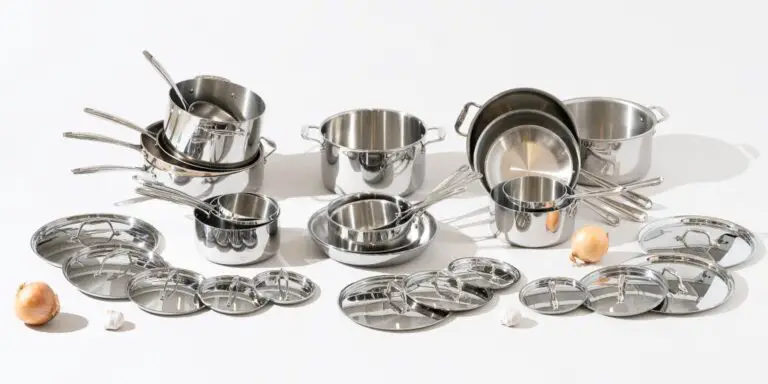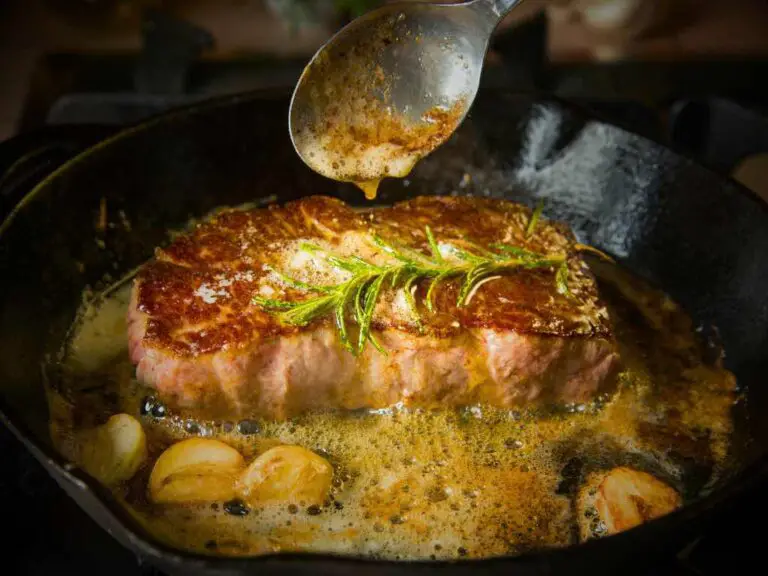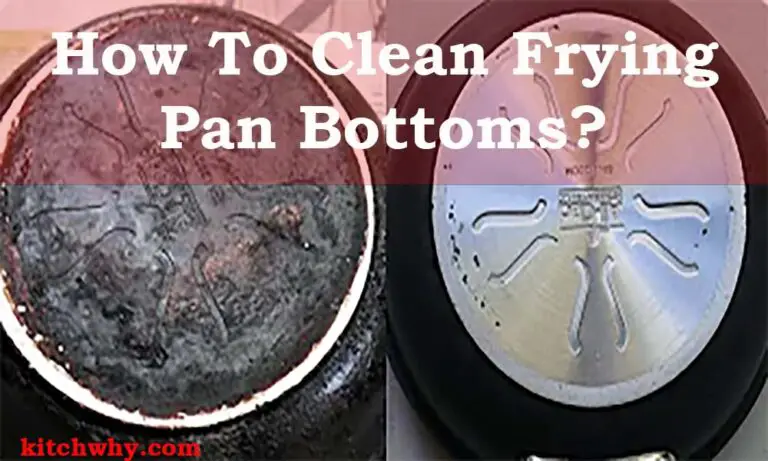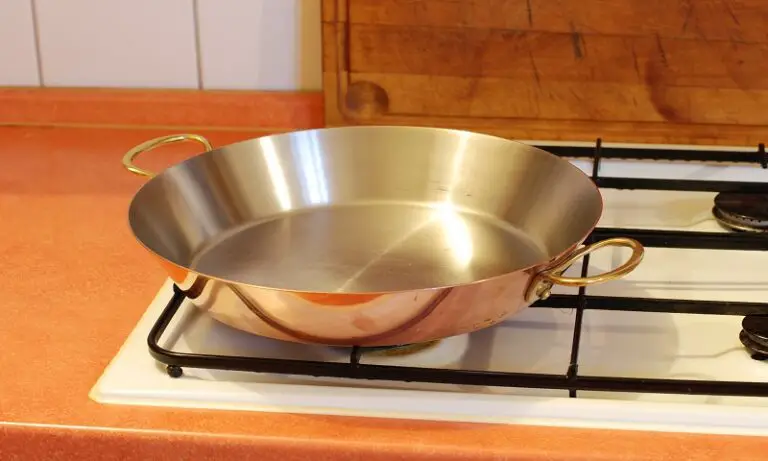How to Cook T-Bone Steak in a Frying Pan: Expert Tips!
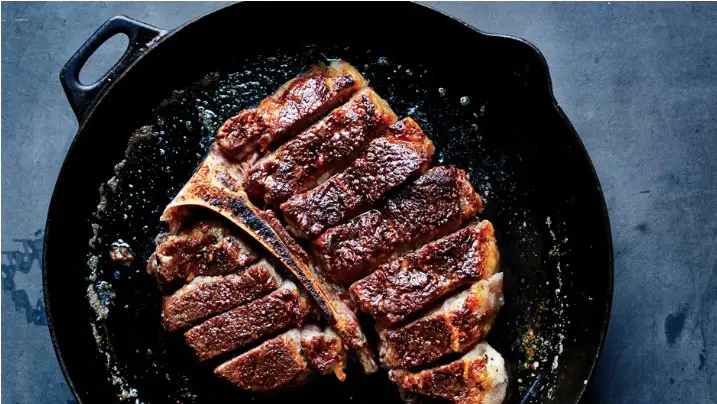
Indulging in a perfectly cooked T-bone steak is a treat for any meat lover. While grilling is a popular method for preparing steaks, not everyone has access to an outdoor grill or favorable weather conditions. Fortunately, with a trusty frying pan and a few simple techniques, you can achieve exceptional results and savor a succulent T-bone steak right in the comfort of your kitchen.
In this guide, we’ll walk you through the step-by-step process of How to Cook T-Bone Steak in a Frying Pan. Whether you’re a seasoned home cook or a novice in the kitchen, this method allows you to unlock the robust flavors and tender texture of this classic cut of beef.
By following these instructions, you’ll be able to create a deliciously seared T-bone steak with a savory crust on the outside, while preserving its juicy and flavorful center. With a few key tips and a little practice, you’ll be well on your way to becoming a master of cooking T-bone steak to perfection.
To cook a t-bone steak medium well in a frying pan, follow these simple steps.
How to Cook T-Bone Steak in a Frying Pan Step by Step Process:
Here’s a recipe for cooking a T-bone steak in a frying pan:
Ingredients:
- 1 T-bone steak
- Salt and pepper, to taste
- 2 tablespoons of vegetable oil
- 2 tablespoons of butter
- Optional: garlic cloves, fresh herbs (such as thyme or rosemary)

Credit: www.nytimes.com
Instructions:
- Take the T-bone steak out of the refrigerator and let it sit at room temperature for about 30 minutes. This allows it to cook more evenly.
- Season both sides of the steak generously with salt and pepper. You can also add any additional seasonings you prefer at this stage.
- Heat a frying pan over medium-high heat and add the vegetable oil. Allow the oil to heat up for a minute or two until it’s hot but not smoking.
- Place the T-bone steak in the hot frying pan. If desired, you can add some garlic cloves and fresh herbs to the pan for extra flavor.
- Cook the steak for about 3-4 minutes on each side for medium-rare doneness. Adjust the cooking time based on your preferred level of doneness. You can use a meat thermometer to check the internal temperature (around 130°F/54°C for medium-rare).
- During cooking, baste the steak with melted butter using a spoon. This adds flavor and helps keep the steak moist.
- After cooking the steak to your desired doneness, remove it from the pan and let it rest on a cutting board or plate for about 5 minutes. This allows the juices to redistribute within the meat.
- Optional: While the steak is resting, you can use the same pan to make a quick pan sauce. Add some butter and minced garlic to the pan and cook for a minute. Then, deglaze the pan with some red wine or beef broth, scraping up any browned bits from the bottom. Simmer for a few minutes until the sauce thickens slightly.
- Slice the T-bone steak against the grain, and serve it with the pan sauce (if prepared) and your favorite sides.
Enjoy your delicious T-bone steak cooked in a frying pan!
Selecting The Perfect T-Bone Steak
Understanding The Different Cuts Of T-Bone Steak And Their Characteristics.
- T-bone steak is a popular cut of beef that consists of two different muscles: The tenderloin on one side and the strip steak on the other. The t-shaped bone in the middle gives this steak its name.
- The tenderloin portion is known for its incredible tenderness and mild flavor, making it perfect for those who prefer a leaner cut of meat.
- On the other hand, the strip steak side of the t-bone offers a slightly firmer texture and a more robust beefy flavor that can satisfy the cravings of any steak lover.
- It’s important to note that the size of the tenderloin and strip steak can vary depending on the cut. Some t-bone steaks may have a larger tenderloin portion, while others may have a larger strip steak portion.
- The ratio of tenderloin to strip steak can affect the overall taste and tenderness of the steak. So, if you have a particular preference, it’s essential to choose the right cut.
Tips For Choosing The Best Quality Meat From Your Local Butcher Or Grocery Store.
- When purchasing a t-bone steak, it’s crucial to buy from a reputable source. This can be your trusted local butcher or a well-known grocery store that specializes in high-quality meats.
- Look for steaks that have a bright red color, which indicates freshness. Avoid steaks with any hint of gray or brown as this can be a sign of aging or poor storage conditions.
- Check for marbling in the meat. Marbling refers to the thin white streaks of fat that are dispersed throughout the muscle. More marbling means more flavor and tenderness in the steak.
- The thickness of the t-bone steak is also an important factor to consider. Thicker steaks are generally easier to cook to your desired level of doneness without overcooking the meat.
- Don’t be afraid to ask questions to your butcher or the staff at the grocery store. They can provide valuable information about the source of the meat, how it was raised, and any specific recommendations for cooking.
Highlight The Importance Of Marbling And Thickness In Selecting A T-Bone Steak.
- Marbling plays a significant role in the taste and texture of a t-bone steak. The thin streaks of fat within the muscle melt during cooking, resulting in a moist and flavorful steak.
- Look for t-bone steaks with a good amount of marbling as it will enhance the overall eating experience.
- Thickness matters when it comes to cooking a t-bone steak. Thick steaks allow for better heat distribution, resulting in a more evenly cooked piece of meat.
- Additionally, thicker steaks retain more juice and tenderness, ensuring a succulent and juicy bite.
- In contrast, thinner steaks may be prone to drying out or becoming overcooked if not carefully monitored during the cooking process.
Remember, selecting the perfect t-bone steak is crucial for a delicious and satisfying meal. Consider the different cuts, choose high-quality meat with ample marbling, and pay attention to the thickness to ensure a steak that melts in your mouth with every bite.
Preparing And Seasoning The T Bone Steak
Recommended Tools And Equipment For Cooking T-Bone Steak In A Frying Pan:
When it comes to cooking a delicious t-bone steak in a frying pan, having the right tools and equipment is essential. Here are a few recommendations to ensure you have everything you need for a successful cooking experience:
- A good-quality frying pan: Look for a sturdy and well-seasoned cast iron or stainless steel frying pan. These materials distribute heat evenly, resulting in a perfectly seared steak.
- Tongs: Invest in a pair of long-handled tongs to easily flip the steak without piercing the meat. This helps to retain the juices and flavors.
- Meat thermometer: To achieve your desired level of doneness, a meat thermometer is a must-have tool. This ensures that you cook the steak to perfection every time.
- Cutting board and sharp knife: Having a cutting board and a sharp knife on hand is important for prepping the steak, allowing you to trim excess fat and ensure even cooking.
Properly Thawing And Bringing The Steak To Room Temperature:
Thawing a t-bone steak correctly and bringing it to room temperature before cooking is crucial for a juicy and tender result. Follow these steps to ensure proper preparation:
- Thawing: If using a frozen steak, thaw it in the refrigerator for 24-48 hours prior to cooking. This gradual process helps retain the steak’s moisture and prevents bacterial growth.
- Room temperature: Before cooking, remove the steak from the refrigerator and let it sit at room temperature for about 30 minutes. This allows for even cooking throughout the meat and reduces the risk of overcooking the outer layers while the center remains cold.
Different Seasoning Options For Enhancing The Flavor Of The Steak:
Seasoning your t-bone steak properly is key to bringing out its natural flavors and creating a taste sensation. Consider the following seasoning options:
- Salt and pepper: The classic combination of salt and pepper is a must when it comes to seasoning a t-bone steak. The salt helps to enhance the meat’s natural flavors, while the pepper adds a subtle kick.
- Optional spices: Experiment with additional spices to add depth and complexity to your steak’s flavor profile. Some popular choices include paprika, garlic powder, chili powder, or a blend of herbs like thyme and rosemary.
- Marinades and rubs: For a more intense flavor, consider marinating your steak or using a dry rub. These can add a delicious layer of taste, but be mindful not to overpower the natural flavor of the meat.
The Importance Of Salt, Pepper, And Optional Spices To Complement The Meat:
Salt, pepper, and optional spices play a crucial role in complementing the natural flavor of the t-bone steak, creating a well-rounded and enjoyable culinary experience:
- Salt: Salt not only enhances the taste of the meat but also aids in tenderizing the steak. It breaks down the proteins, resulting in a more tender and juicy texture.
- Pepper: Adding freshly ground pepper to your steak provides a subtle heat and complements the savory flavors. It helps to strike a balance with the salt and enhances the overall taste.
- Optional spices: Experimenting with different spices allows you to customize the flavor of your t-bone steak. From smoky barbecue rubs to spicy chili blends, these optional spices can elevate your steak to new heights of deliciousness.
Remember, proper seasoning is a matter of personal preference, so feel free to adjust the quantities of salt, pepper, and optional spices according to your taste. With the right tools, proper preparation, and a well-balanced seasoning, you’ll be on your way to cooking a mouthwatering t-bone steak in a frying pan.
Cooking Techniques For T Bone Steak
When it comes to cooking a delicious t bone steak in a frying pan, mastering the right cooking techniques is key. From preheating the pan to choosing the right cooking oil, every step plays a crucial role in achieving a perfectly cooked steak.
In this section, we will explore different cooking methods such as searing, traditional frying, and reverse searing. We will also discuss the benefits and drawbacks of each method, highlighting the importance of achieving a golden-brown crust while maintaining a juicy interior.
Let’s dive in!
Preheating The Frying Pan And Selecting The Right Cooking Oil
- Preheating the frying pan:
- Allow the pan to heat up for a few minutes on medium-high heat before adding the steak.
- This ensures even cooking and creates a flavorful crust on the steak.
- Selecting the right cooking oil:
- Opt for oils with a high smoke point such as canola, grapeseed, or avocado oil.
- These oils can withstand high heat and prevent the steak from sticking to the pan.
- Avoid using olive oil or butter as they have lower smoke points and can burn easily.
Exploring Different Cooking Methods
- Searing:
- Searing involves quickly cooking the steak over high heat to create a caramelized crust.
- Start by preheating the frying pan on high heat, then add the steak and sear for a few minutes on each side.
- This method is ideal for achieving a well-browned exterior while keeping the center juicy and tender.
- Traditional frying:
- Traditional frying involves cooking the steak on medium heat in oil or butter.
- Heat the pan and add the oil or butter before placing the steak in the pan.
- Cook the steak for a few minutes on each side until it reaches the desired doneness.
- This method provides a more even cooking temperature and allows for more control over the level of doneness.
- Reverse searing:
- Reverse searing is a two-step process that involves slow cooking the steak in the oven and finishing it with a quick sear in the frying pan.
- Start by cooking the steak in a preheated oven at a low temperature until it reaches an internal temperature of about 10-15 degrees below the desired doneness.
- Then, sear the steak in a hot frying pan for a minute or two on each side to develop a crispy crust.
- This method results in a perfectly cooked steak with a tender interior and a flavorful crust.
Benefits And Drawbacks Of Each Cooking Method
- Searing:
- Benefits: Creates a beautiful crust and locks in the steak’s natural juices.
- Drawbacks: Requires careful monitoring to prevent the steak from overcooking.
- Traditional frying:
- Benefits: Provides more control over the level of doneness and results in a tender steak.
- Drawbacks: May not achieve as distinct a crust as searing.
- Reverse searing:
- Benefits: Allows for precise control over the cooking process and yields a steak with a perfect crust and tender interior.
- Drawbacks: Requires more time and planning compared to other methods.
Achieving A Golden-Brown Crust While Maintaining A Juicy Interior
- Achieving the perfect crust:
- Make sure the frying pan is preheated to a high temperature before adding the steak.
- Use a cooking oil with a high smoke point to prevent sticking and aid in browning.
- Avoid overcrowding the pan to ensure even heat distribution.
- Resist the urge to flip the steak too frequently, as it can prevent the crust from developing.
- Maintaining a juicy interior:
- Cook the steak to the desired internal temperature using a meat thermometer to avoid overcooking.
- Let the steak rest for a few minutes after cooking to allow the juices to redistribute.
With these cooking techniques, you’ll be able to cook a mouthwatering t bone steak in a frying pan every time. Experiment with different methods to find your preferred steak perfection. Now, let’s get cooking!
Achieving The Perfect Doneness Level
Understanding The Different Levels Of Doneness (Rare, Medium-Rare, Medium, Etc.)
When it comes to cooking the perfect t bone steak in a frying pan, achieving the perfect doneness level is key. Different people have different preferences when it comes to how they like their steak cooked, so it’s important to understand the different levels of doneness to ensure you cook it to perfection for yourself or your guests.
Here are some key points to keep in mind:
- Rare: A rare steak is seared on the outside and cooked very minimally in the middle. It will have a cool, red center and a slightly charred exterior. The internal temperature for a rare steak ranges from 125°f to 130°f (51°c to 54°c).
- Medium-rare: This is one of the most popular levels of doneness for steak. It has a warm, red center with a hint of pink, and a nice sear on the outside. The internal temperature ranges from 130°f to 135°f (54°c to 57°c).
- Medium: A medium steak will have a warm, pink center and a well-developed sear. It is slightly more cooked than medium-rare. The internal temperature ranges from 135°f to 145°f (57°c to 63°c).
- Medium-well: If you prefer more doneness to your steak, but still want a hint of pink in the center, medium-well is the way to go. It will have a slightly pink center with mostly grayish-brown meat. The internal temperature ranges from 145°f to 155°f (63°c to 68°c).
- Well-done: Well-done steaks are cooked thoroughly with no pink in the center. They will have a uniform brown color throughout. The internal temperature ranges from 155°f and above (68°c and above).
Using A Meat Thermometer To Ensure Accurate Cooking And Desired Doneness
To ensure your t bone steak is cooked to your desired doneness level, it is highly recommended to use a meat thermometer. Here are some key points about using a meat thermometer:
- Insert the meat thermometer into the thickest part of the steak, avoiding any bones or fat.
- Make sure the thermometer is not touching the pan or the bones, as this can give inaccurate readings.
- Wait for a few seconds until the thermometer gives you a stable reading.
- Check the internal temperature against the desired doneness levels mentioned earlier to achieve the perfect cook.
Discuss The Cooking Times And Temperatures For Each Doneness Level
Cooking times and temperatures for each doneness level can vary depending on the thickness of the steak and personal preferences. Here are some general guidelines:
- Rare: Cook for approximately 2-3 minutes per side on high heat, with an internal temperature of 125°f to 130°f (51°c to 54°c).
- Medium-rare: Cook for approximately 4-5 minutes per side on medium-high heat, with an internal temperature of 130°f to 135°f (54°c to 57°c).
- Medium: Cook for approximately 5-6 minutes per side on medium heat, with an internal temperature of 135°f to 145°f (57°c to 63°c).
- Medium-well: Cook for approximately 6-7 minutes per side on medium-low heat, with an internal temperature of 145°f to 155°f (63°c to 68°c).
- Well-done: Cook for approximately 8-10 minutes per side on low heat, with an internal temperature of 155°f and above (68°c and above).
Tips For Adjusting Cooking Times Based On The Thickness Of The Steak
When it comes to cooking t bone steaks of different thicknesses, adjusting the cooking times is crucial to achieve the desired doneness level. Here are some tips to keep in mind:
- Thicker steaks will require longer cooking times, while thinner steaks will cook faster.
- For thicker steaks, you may need to lower the heat slightly to ensure the middle is cooked without burning the exterior.
- If you prefer a rare or medium-rare steak, it’s advisable to go for thicker cuts to avoid overcooking.
- For thinner steaks, it’s important to keep a close eye on the cooking process to prevent them from becoming overcooked.
Remember, these are general guidelines, and everyone’s preferences may vary. It’s always best to use a meat thermometer to ensure accurate cooking and achieve the perfect doneness level for your t bone steak. With these tips in mind, you’ll be well-equipped to cook a delicious steak right in your frying pan.
Resting And Serving The T Bone Steak
The Importance Of Resting The Cooked Steak Before Serving.
Resting the cooked t-bone steak is a crucial step that shouldn’t be overlooked. By allowing the steak to rest properly, you ensure that the juices redistribute evenly throughout the meat, resulting in a tender and flavorful steak. So, resist the temptation to cut right into that sizzling piece of meat and give it some time to rest.
Recommended resting time for optimal tenderness and flavor:
- Let the t-bone steak rest for at least 5 to 10 minutes. This resting period allows the residual heat to continue cooking the steak gently while the juices reabsorb into the meat.
- For larger cuts or thicker steaks, a resting time of 10 to 15 minutes is recommended. This extra time allows for even more tenderness to develop.
Tips for slicing and plating the t-bone steak:
- Use a sharp knife to slice the t-bone steak against the grain. This ensures maximum tenderness and makes it easier to chew.
- Cut thin slices for a more elegant presentation or thicker slices if you prefer a heartier bite.
- Arrange the steak slices on a warm platter, fanning them out to showcase their deliciousness.
Serving suggestions and popular side dishes to accompany the steak:
- Pair your t-bone steak with a classic steakhouse accompaniment: Creamy mashed potatoes and steamed asparagus.
- Enjoy your steak with a side of grilled vegetables, such as zucchini, bell peppers, and onions, for a burst of freshness.
- For a more rustic option, serve your t-bone steak with a side of roasted potatoes and a mixed green salad.
Remember, resting the cooked t-bone steak is paramount to achieving the best flavor and texture. So, exercise patience and let those flavors mingle before you dig in.
Frequently Asked Questions On How To Cook T Bone Steak In Frying Pan
How Long Should I Cook A T-Bone Steak In A Frying Pan?
Cook the t-bone steak for about 4-6 minutes per side to achieve medium-rare doneness, or adjust the time based on your preferred level of doneness. Use a meat thermometer to ensure it reaches an internal temperature of 135-140°f (57-60°c).
What Oil Should I Use When Cooking A T-Bone Steak In A Frying Pan?
Opt for oils with high smoke points like vegetable, canola, or peanut oil. These oils can withstand high heat without burning, ensuring your t-bone steak gets a nice sear and doesn’t become overly smokey or charred.
Should I Season The T-Bone Steak Before Cooking It In A Frying Pan?
Yes, season the steak generously with salt and pepper before cooking. You can also add your favorite dry rub or marinade to enhance the flavor. Let the steak sit at room temperature for about 30 minutes before cooking to allow the seasoning to penetrate.
Can I Cook A T-Bone Steak To Well-Done In A Frying Pan?
Yes, you can cook a t-bone steak to well-done in a frying pan by extending the cooking time. However, keep in mind that well-done steaks may become tougher and less juicy than those cooked to medium or medium-rare. It’s essential to monitor the internal temperature to prevent overcooking.
How Should I Rest The T-Bone Steak After Cooking It In A Frying Pan?
Allow the t-bone steak to rest for about 5-10 minutes after cooking. This resting period allows the juices to redistribute within the meat, resulting in a juicier and more flavorful steak. Loosely tent the steak with foil to keep it warm during the resting time.
What Side Dishes Pair Well With A T-Bone Steak Cooked In A Frying Pan?
Classic side dishes like roasted potatoes, grilled vegetables, or a fresh salad complement the flavor of a t-bone steak. You can also serve it with creamy mashed potatoes and a side of sautéed mushrooms for a delicious and satisfying meal.
Conclusion
To recap, cooking a t-bone steak in a frying pan to a medium-well doneness requires a few key steps. First, choose a good cut of meat and let it reach room temperature before seasoning it with salt, pepper, and other desired spices.
Preheat your frying pan over medium-high heat and add a bit of oil to prevent sticking. Place the steak in the pan and let it sear for a couple of minutes on each side until a golden crust forms. Lower the heat and continue cooking until the desired level of doneness is achieved.
Rest the steak for a few minutes before slicing it, allowing the juices to evenly distribute. Remember, practice makes perfect, so don’t be discouraged if your first attempt isn’t exactly right. With these tips and a little patience, anyone can successfully cook a mouthwatering t-bone steak in a frying pan.
Happy cooking!
Popular Blog Post:

